AMMAN — The Cultural
Avenue in Shmeisani is a brilliantly designed public space, yet it has failed
to attract pedestrians throughout the past 20 years.
اضافة اعلان
After the Greater Amman Municipality (GAM) was established
in 2002 and Amman was chosen as the Arab Capital of Culture 2002, GAM developed
the Cultural Avenue in Amman as a destination for pedestrians to encourage
socializing in public spaces.
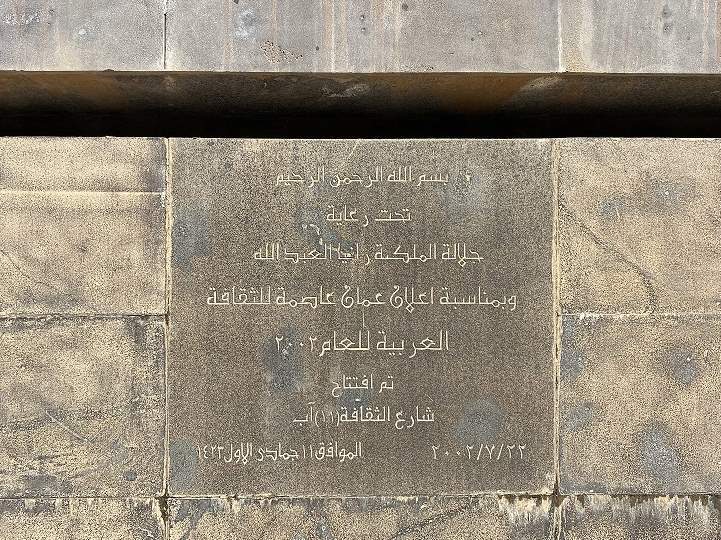 A photo collection of the Cultural Avenue in Shmeisani. The
avenue was built when Amman was chosen as the Arab Capital of Culture 2002. (Photos: Nayrouz
Ali/Jordan News)
A photo collection of the Cultural Avenue in Shmeisani. The
avenue was built when Amman was chosen as the Arab Capital of Culture 2002. (Photos: Nayrouz
Ali/Jordan News)
Located in Shmeisani, which was considered the hub of Amman
at that time. The area was primarily commercial and vibrant, filled with all
types of people and ages; residents of Amman who lived there earlier were
considered to be of the higher class. In order to gain foot traffic, the
project’s location was set in the banking district.
Designed by the Dutch architect Tom Postma of Tom Postma
Design, the architect described it as a “pedestrian boulevard.” The project
introduced a new typology of public spaces in Jordan that redefines the
relationship between vehicles and people.
Rather than creating a park in a busy area, this public
space was created by redesigning a 360m long street. The street island was
enlarged to be a 15m wide pedestrian area along the road and includes shops, an
open theater, seating areas, and a gallery space. In contrast, the surrounding
streets were narrowed to control the vehicle traffic and give priority to
people.
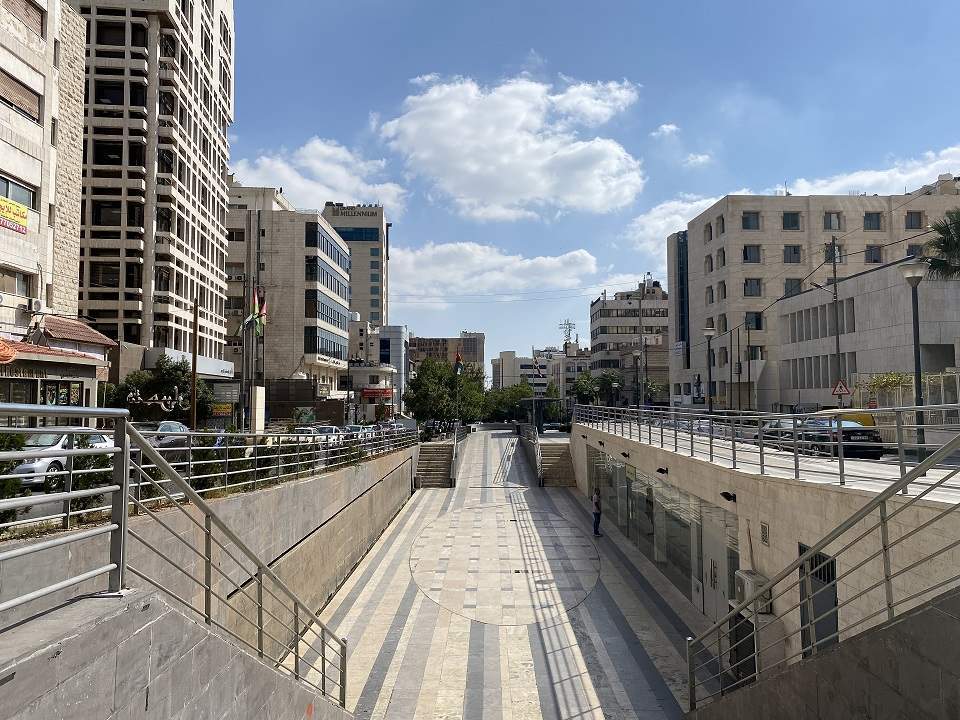 A photo collection of the Cultural Avenue in Shmeisani. The avenue was built when Amman was chosen as the Arab Capital of Culture 2002. (Photos: Nayrouz Ali/Jordan News)
A photo collection of the Cultural Avenue in Shmeisani. The avenue was built when Amman was chosen as the Arab Capital of Culture 2002. (Photos: Nayrouz Ali/Jordan News)
The linear spine was divided into seven segments to offer
various experiences for the users. The first segment, which was found on the
northern edge, has a water channel that runs along the entirety of the segment.
Other segments include a plaza and an amphitheater, shaded
by sculptural structures, with a “green area” that includes plants and a shaded
seating area found between the plaza and amphitheater. The theater is also
surrounded by a series of kiosk shops from the south.
The gallery, another segment of the avenue, was designed to
be a public showroom with displays viewable to pedestrians. The slope of the street
was designed to help prevent street noise and the gallery is located at a lower
level from the street, which can be reached by ramps and stairs.
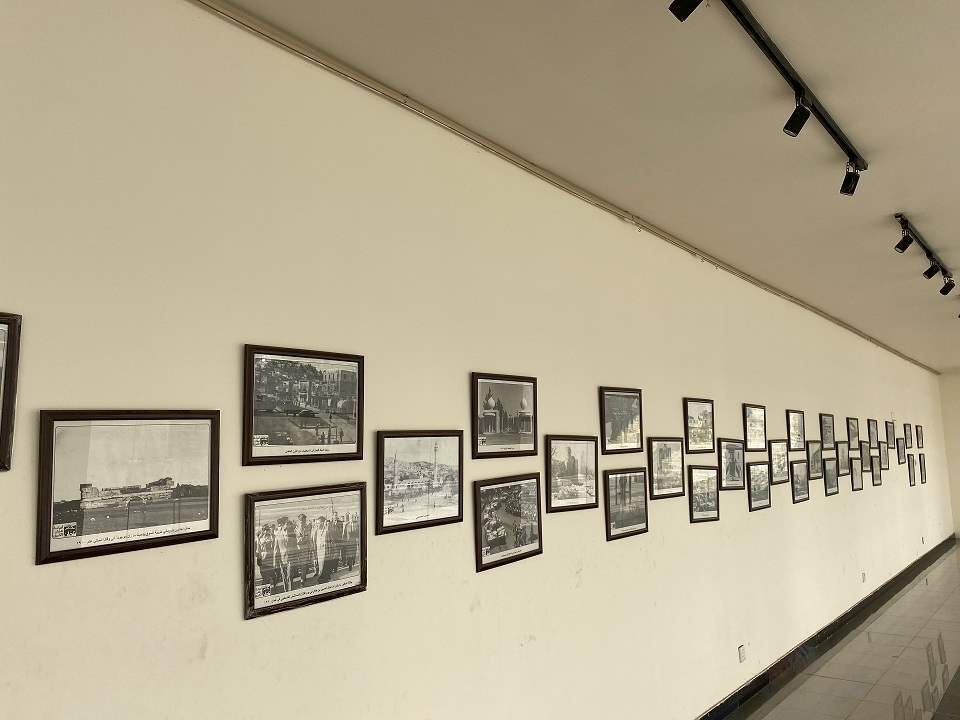 A photo collection of the Cultural Avenue in Shmeisani. The avenue was built when Amman was chosen as the Arab Capital of Culture 2002. (Photos: Nayrouz Ali/Jordan News)
A photo collection of the Cultural Avenue in Shmeisani. The avenue was built when Amman was chosen as the Arab Capital of Culture 2002. (Photos: Nayrouz Ali/Jordan News)
Local Jordanian materials were used to pave the spine; black
basalt, red granite, green Dabaa stone, and Ajloun stone were all used to
create colorful strips that bought the complex.
The Cultural Avenue or “11 August Street” came as an attempt
to facilitate pedestrian areas within the city with multiple projects that were
worked on at that time. However, 20 years later the Cultural Avenue might be
the least successful among those projects despite its beautiful design.
One of the main reasons for the project’s failure might be
the lack of attractions for visitors. The area is considered a business area with relatively few shops, which means
it’s rare to see visitors who do not work or live in the area.
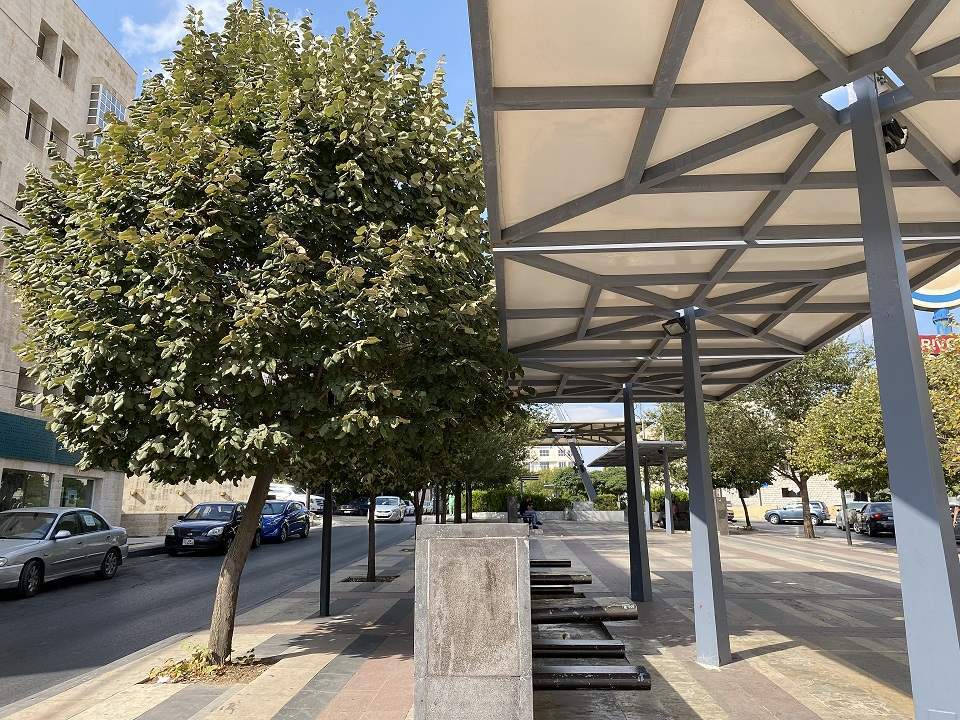 A photo collection of the Cultural Avenue in Shmeisani. The avenue was built when Amman was chosen as the Arab Capital of Culture 2002. (Photos: Nayrouz Ali/Jordan News)
A photo collection of the Cultural Avenue in Shmeisani. The avenue was built when Amman was chosen as the Arab Capital of Culture 2002. (Photos: Nayrouz Ali/Jordan News)
The kiosks designed in the avenue were intended to be book
shops but failed to attract enough foot traffic and eventually became
convenience stores.
Moreover, in an area that doesn’t offer enough parking
spaces, it is hard to ignore the lack of public transportation in Jordan, which
aided in the failure of attracting visitors outside the neighborhood due to the
inconvenience of parking.
What used to be an elegant space is now facing neglect and
deterioration; some of the architecture, including seats, signs, and benches,
have been ruined due to them being used as skateboard ramps.
The functions of surrounding buildings — being a banking
district — play a role in why the avenue is lively at noon but empty at night —
and if not empty, then filled with young men drinking and smoking argileh,
making it uninviting for women to visit the avenue or partake in activities
there.
Mohammad Al-Ramahi, a 38-year-old man who lives in the
neighborhood, describes it as a “ghost town” after 4pm.
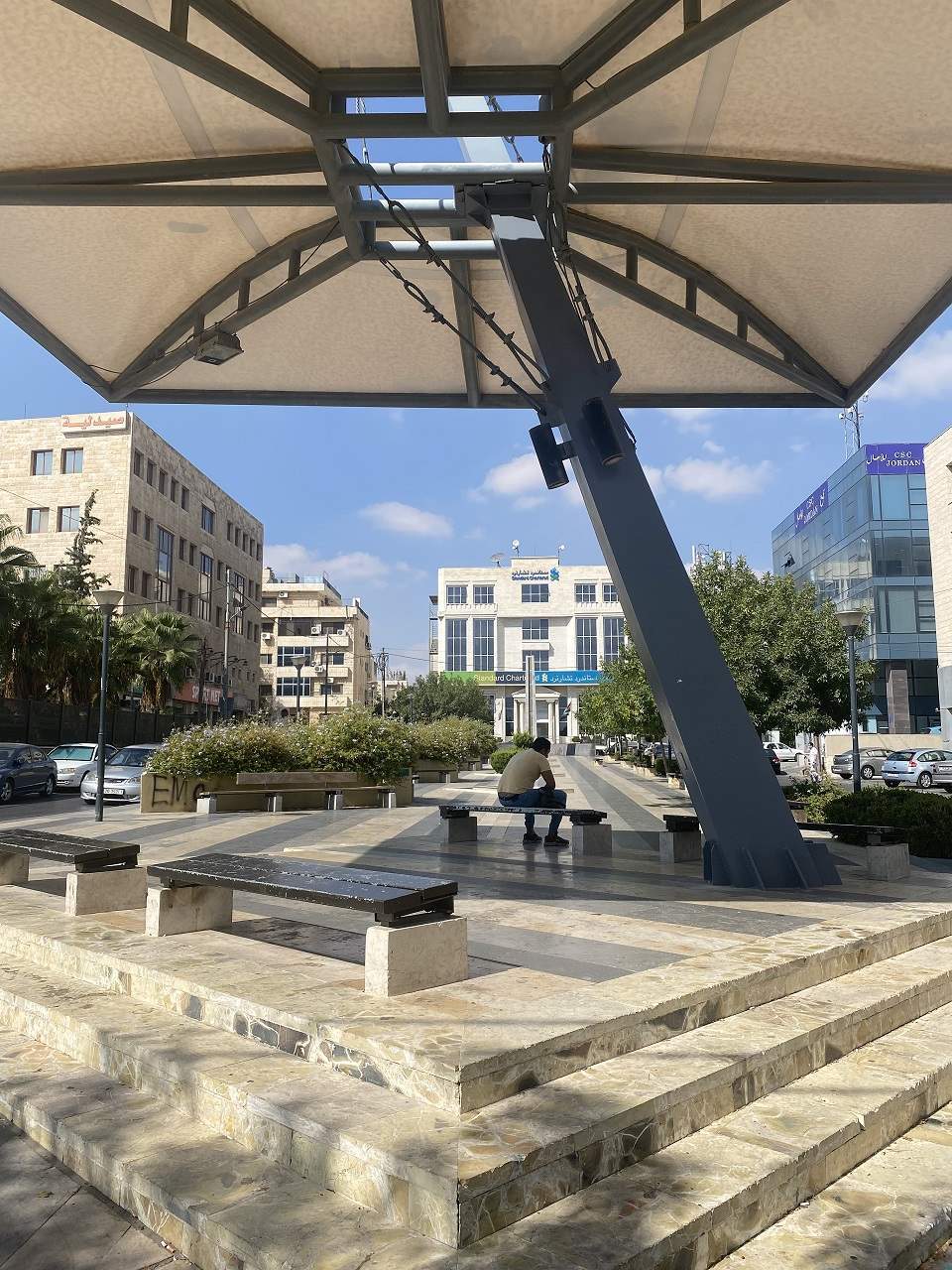 A photo collection of the Cultural Avenue in Shmeisani. The avenue was built when Amman was chosen as the Arab Capital of Culture 2002. (Photos: Nayrouz Ali/Jordan News)
A photo collection of the Cultural Avenue in Shmeisani. The avenue was built when Amman was chosen as the Arab Capital of Culture 2002. (Photos: Nayrouz Ali/Jordan News)
However, the space is not entirely deserted and unimportant
to everyone; Oday Abu Nassar, Hamza Khdour, and Abdulrahman Awwad are all
20-year-old students that study in Al-Qadisiyah College right next to the
avenue and have been coming there every day for the past two years and still
manage to find joy in the space.
“It is very calm in here and filled with greenery, it is
nice to come here with friends and chat a bit, most of our college’s students
pass by here every day, and somehow it became an essential part of the day,”
said Khdour.
Read more Lifestyle



